Once you have created your Google Analytics 4 (GA4) property, you may be wondering what are some best practices moving forward. I will guide you through 10 approaches for you to apply to your property and to use them in your daily work. These approaches are a mix of setting up additional account configurations as well as learning about optional features that are very useful to you.
1. Connecting Google’s Platforms to Google Analytics
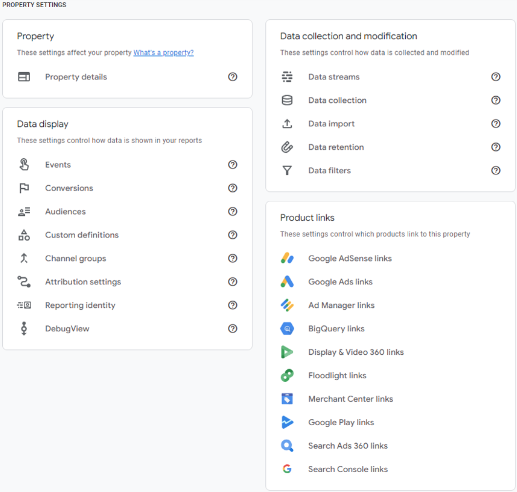
Make sure to connect your platforms to GA4 in order to obtain a holistic view of your data and performance. For instance, when connecting your Google Search Console account, you will be able to view some of your organic results in your property, such as Average Position for your queries and landing pages.
As for connecting your Google Ads account to your property, this will allow your data for campaigns, ad groups, keywords, etc. to appear within your property. From there, you will see a blend of Google Analytics and Google Ads metrics in your reports, such as Sessions and CPC. Additionally, there is the ability to use GA4 audiences in Google Ads for remarketing purposes.
You can also connect other Google’s platforms to your GA4 property, such as BigQuery, DV360, Merchant Center, and more.
2. Within Your GA4 Data Stream
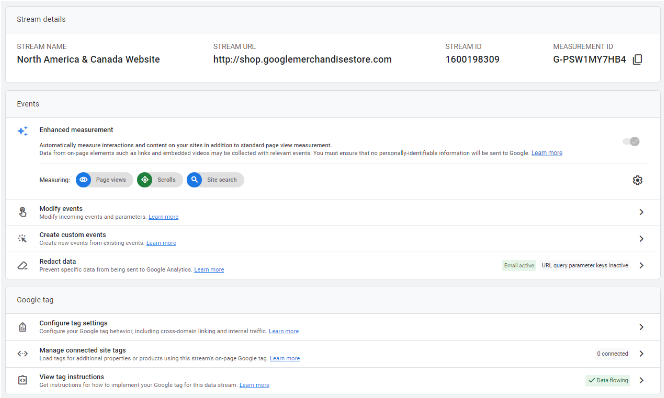
Upon setting up your Google Analytics data stream, additional measures that you can take in order to ensure optimal performance and to best tailor your property are to exclude unwanted referrals by listing domains that you would not like to receive referral data, such as your own company’s website. Additionally you can exclude your company’s internal traffic. This can be completed via the Configure tag settings of your GA4 data stream.
Nevertheless, a risky setting that many users are not familiar with is to be wary of the session timeout timer setting because any adjustments will definitely impact your overall data reporting! That being said, the best practice is leaving the pre-configured setting as is (i.e., sessions at 30 minutes and engaged sessions at 10 seconds).
3. Configure Email Alerts in GA4
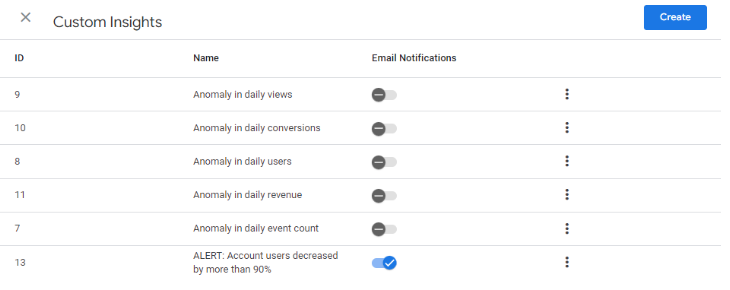
Configure GA4 email alerts by using the default ones and/or creating custom ones, which can be found in the Insights & recommendations section of the Home page of your property. This is a recommended approach in order to be alerted of anomalies that may occur in your account in terms of performance.
For instance, the moment that there happens to be a significant drop in total users by 90% from one day to another, you will receive an email alert in regards to this problem. You can also set other types of alerts for the performance of your campaigns, product revenue, conversions, and much more.
Furthermore, GA4 email alerts can be set to an evaluation frequency of daily, weekly or monthly, along with a comparison period of yesterday, same day last week or same day last year. Set these parameters to your own needs.
4. Build Your Google Analytics Audiences
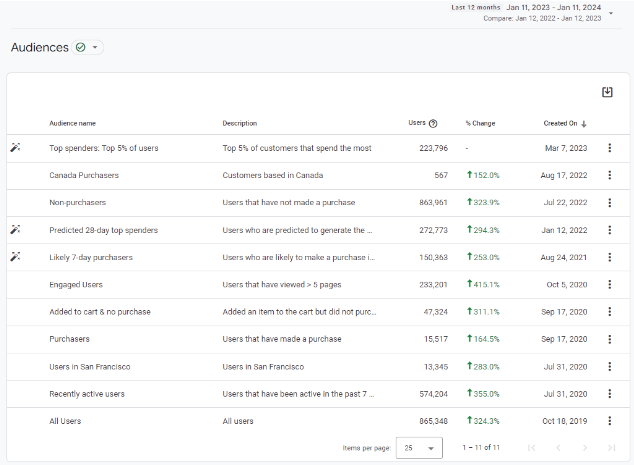
It is important to begin populating your GA4 remarketing audiences as soon as possible, because it is only the moment when you create your audiences that they start to build in the total amount of users available to be retargeted with ads.
For instance, when creating an audience with a duration of 30 days, it will take 30 days to fully populate or in the case of an audience with a duration of 540 days (which is the maximum), it will require 540 days to completely populate. These GA4 audiences can then be used in your Google Ads account for remarketing campaigns (only once your GA4 property and Google Ads account are linked together).
5. Set up Your GA4 Events and Conversions
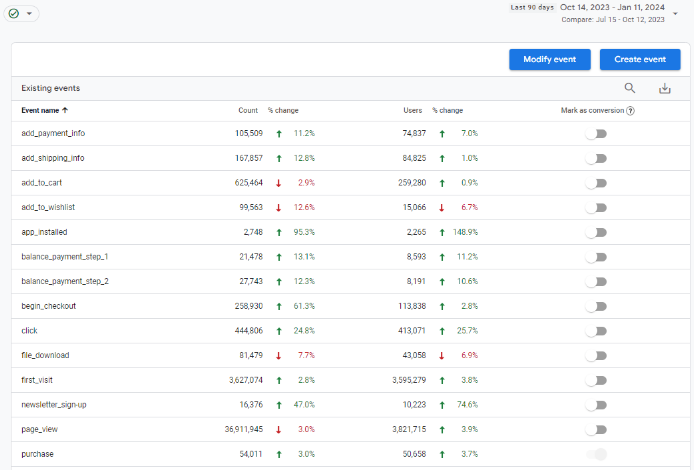
This part is very crucial for the essence of your business because it allows you to obtain the final results of all of your marketing initiatives. Create custom events from within GA4 or via Google Tag Manager in order to track specific actions that your users take on your website.
These events can vary in terms of soft conversions like clicks on a CTA button and page views of a popular page as well as hard conversions such as lead form submissions or ecommerce actions like add to carts and purchases. And remember to mark as conversion only your most important events!
6. What is the GA4 DebugView?
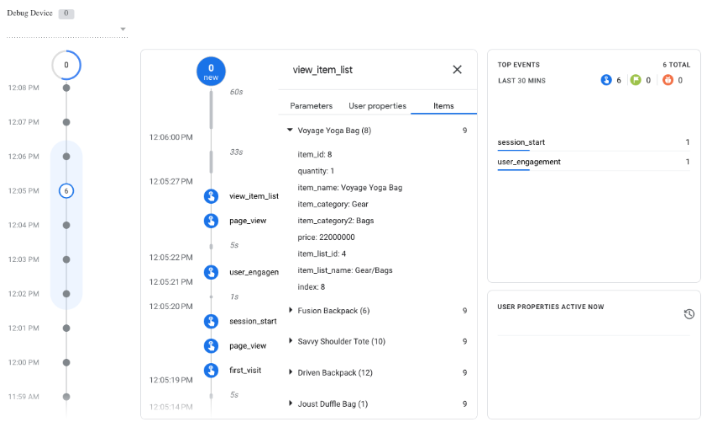
As you set up your Google Analytics events, it is highly recommended to use the DebugView that can be found in the data display section of your property settings under Admin, because this allows you to determine whether your conversion data will successfully generate in your property or not.
For example, during the testing phase of your events, you will be able to view whether your events have triggered or not depending if they appear in the DebugView. Also, you can obtain an overview of the events information such as page location or form name or product type, or any other info that you have configured to your events.
7. Adjust Your GA4 Attribution Settings
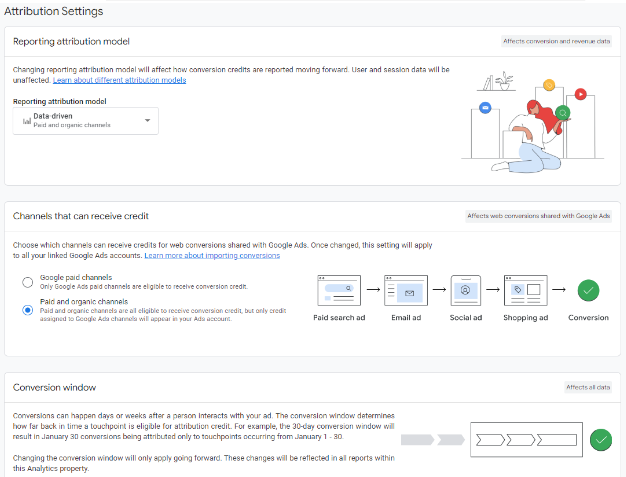
The attribution settings, which can be found in the data display section of your property settings, is where you may want to adjust your reporting attribution models and conversion windows that are best suited to your own business model. For starters, it is recommended that you have your attribution model set as data-driven in order to generate a balanced credits distribution reporting for your conversions across your different channels and sources.
As for your conversion window, this depends on how long it generally takes for your own users to convert considering the number of touchpoints that happen along their journey (note that any conversions exported to your Google Ads account will also be impacted by this setting and it is only within GA4 that you can modify your conversion window for Google Ads in which it will impact all conversions as opposed to only one conversion).
8. About GA4 Dimensions and Metrics
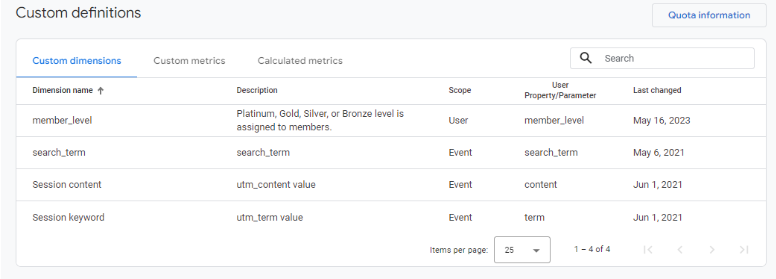
Your property is already pre-configured with the essential dimensions for traffic source, demographic, geography, platform, device, etc. and metrics related to advertising, ecommerce, events, sessions, etc.
Interestly, a hidden gem that many do not know is that in GA4 you have the ability to create your own custom dimensions like member_level (platinum, gold, silver or bronze) and metrics like video views, albeit this approach is quite complex though. This can be configured under custom definitions, which can be found in the data display section of your property settings.
All of these elements allow you to manipulate and extract the data that you need in your GA4 reports for custom reporting.
9. Google Analytics Filters and Comparison in Reports
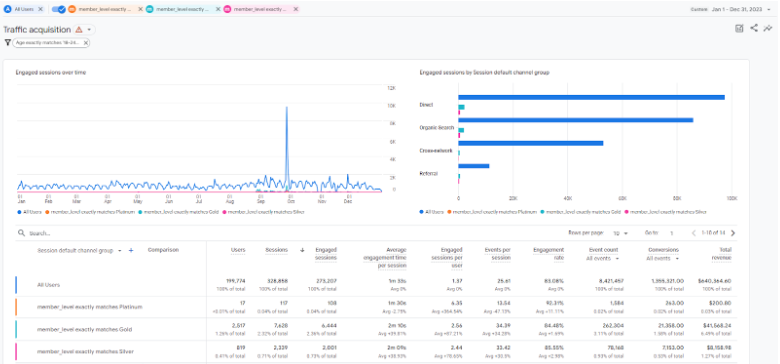
In any report, you can manipulate it by editing filters and comparisons at the dimension level in order to display specific information but keep in mind that you can only build up to 5 conditions as a maximum for each.
For instance, you can adjust your report to exclusively include the following: Canada as the Country, 18-24 and 25-34 as the Age, and Mobile as the Device Category. In order to further specify your analysis, you can add a comparison in order to, for instance, compare Platinum members vs. Gold members vs. Silver members (against All Users).
10. Create Your Custom Reports and Dashboards in GA4
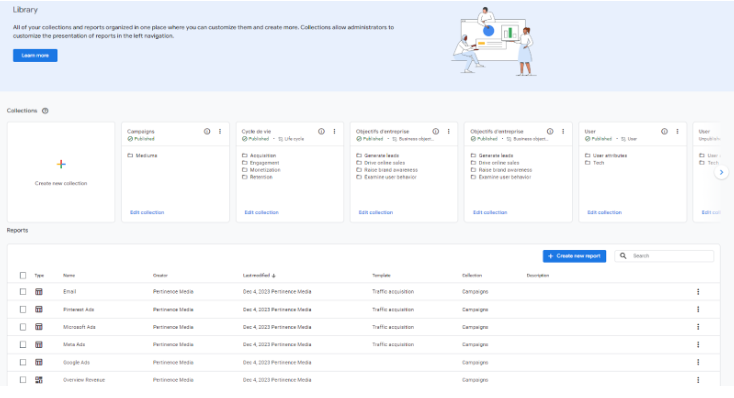
In Google Analytics, you have the flexibility to create custom reports and dashboards in any way that is best tailored to your business and there are plenty of different methods of doing it.
For example, you can create a custom GA4 report that will house all of your campaigns under one roof and you may even split them by platforms, if necessary. This way you will always have a dedicated report for only campaigns for a quick reference, as opposed to always filtering the generic reports in order to seek them out. A method in creating custom reports is via the Library section under Reports.
As for custom GA4 dashboards, you can manipulate dashboards in the approach that best suits your objectives in order to display certain KPIs, for instance, you can create a dashboard related to your product categories and display its total sessions and transactions. This can be done via the Explore area of Google Analytics, which is an alternative approach as opposed to using Looker Studio.
Conclusion
You have now familiarized yourself with 10 best practices in Google Analytics (GA4). That is configuring optional settings such as connecting additional Google platforms, setting up email alerts, choosing your attribution model, and more. Also, customizing your GA4 with unique reports, dashboards, dimensions, etc. With all of the above in the intention to adjust your Google Analytics to your own business model and to facilitate your daily use of it.
At Pertinence Media, we are a team of experts, so if you would like a specialized and tailored experience about GA4 and analytics, make sure to fill out our contact form!







